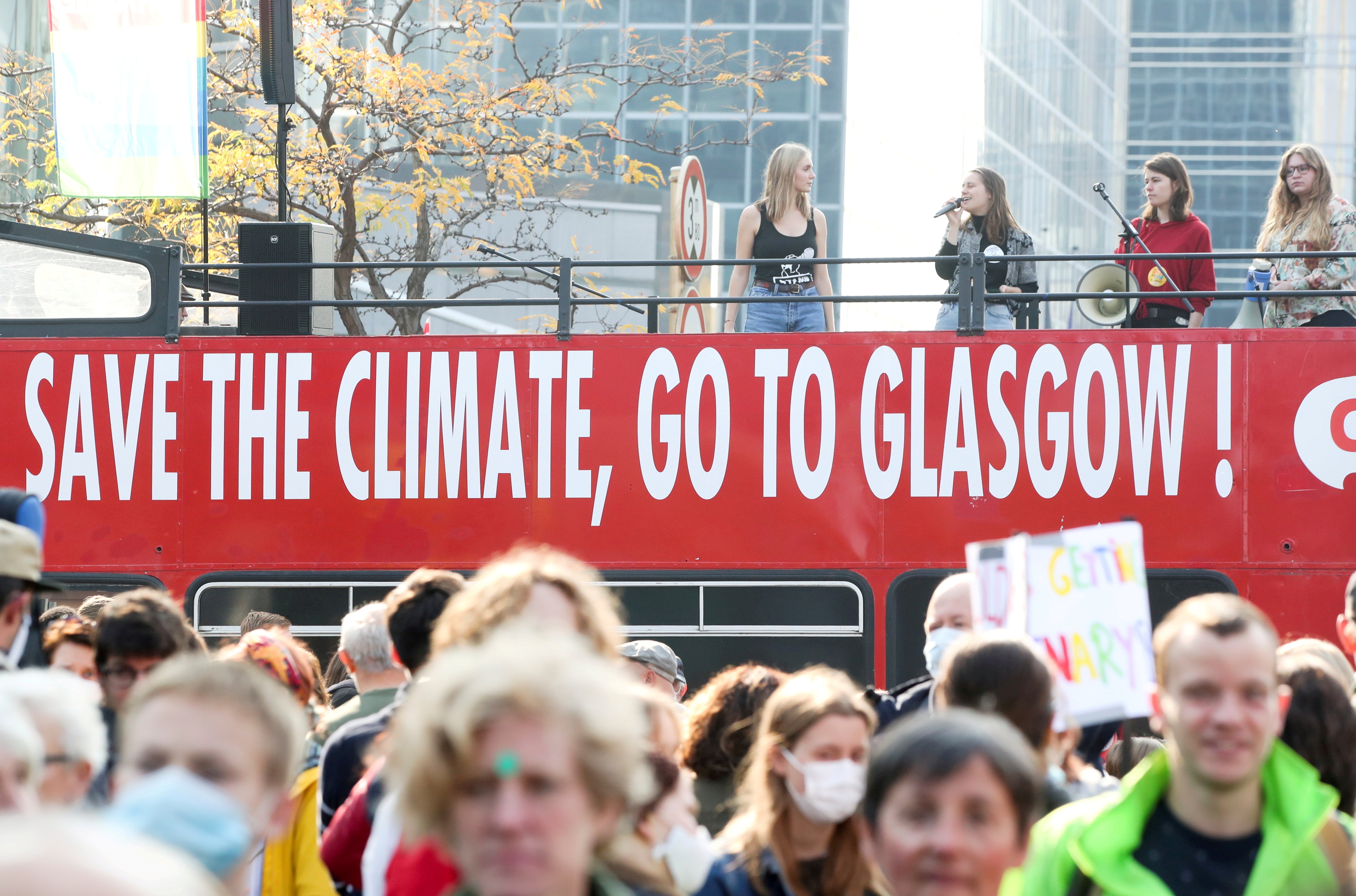Cop26: How to put your money where your mouth is
As all eyes turn to Glasgow, here’s a beginner’s guide to investing for climate

Global warming is the focus of our collective attention this week as thousands of delegates arrive in Glasgow for the 26th UN Climate Change Conference.
The COP26 summit brings together heads of state, climate experts and campaigners in the hope they can agree a coordinated action plan to tackle the problem. It is, we are told, our last chance.
But what can investors do to support the various industries and companies that are involved in creating a more sustainable planet?
Here we ask the experts to highlight the various sectors, stocks and funds that could be worth considering.
Major environmental themes
Reducing carbon emissions remains the biggest environmental theme, according to Becky O’Connor, head of pensions and savings at Interactive Investor.
“It’s partly due to the focus on reaching net zero,” she says. “Targets are set by the government and companies must report on progress, so all sectors are being spurred into action.”
How to achieve these targets, she points out, is a matter of debate with some institutional investors supporting an engagement strategy to force through changes at carbon intensive companies.
“Others prefer a divestment approach, with funds being channelled to companies and industries making demonstrable positive impact instead,” she adds.
Of course, climate change isn’t the only area of interest.
“Sustainable water and marine use, pollution prevention and control, a transition to a circular economy, and the protection and restoration of biodiversity are all themes,” she says.
Companies that may benefit
Many individual companies can benefit from environmental themes, according to Susannah Streeter, senior investment and markets analyst at Hargreaves Lansdown.
“Shares in National Grid have already lifted following the announcement of fresh subsidies for electric vehicle infrastructure and gas boiler alternatives,” she says.
She predicts big shifts, such as moves towards electric vehicles or heat pumps, require huge investment in the grid to deliver the extra electricity and additional storage facilities needed.
“The National Grid [is a project] that the regulator believes will be a good use of capital,” she says. “Upgrading the grid could mean huge investment and a significant rise in regulated returns.”
Investment funds
Darius McDermott, managing director of FundCalibre, believes it’s time for everyone involved in asset management to help make a difference.
“This is where our industry has its chance to shine,” it says. “It runs trillions of pounds and there is the opportunity to do good – and still make money.”
However, he points out it’s a crowded area with hundreds of funds boasting sustainable mandates having been launched in recent years.
“They’re not all going to be good,” he warns. “However, there are some established products that can deliver fantastic results.”
He cites the Ninety One Global Environment fund as a prime example. “If you’re an investor that cares passionately about carbon, then this is a fantastic place to go,” he says.
Of course, the first step is deciding the area that appeals to you most.
Fund manager approach
Sagar Thanki, who manages the Guinness Sustainable Global Equity fund with Joseph Stephens, identifies whether a firm’s products and services can be deemed sustainable.
“Resource efficiency is one of our themes,” he says. “Our investee companies must be aligned to either clean energy, energy efficiency, or water management."
He suggests a number of companies hit the mark, including Spirax-Sarco Engineering, a leading name in steam systems; and Halma, the group of life-saving technology businesses.
Randeep Somel, manager of the M&G Climate Solutions Fund, looks for climate solution providers that will be benefit from the global target of net zero greenhouse gas emissions by 2050.
“We split investments into three areas that will have the maximum impact: clean energy, green technology, and the circular economy,” he says.
Favoured companies within clean energy include Verbund, an Austrian-listed stock that supplies electricity from emissions-free hydropower dams.
“In green technology we have companies such as Infineon Technologies, which designs and produces semiconductor chips for electric vehicles, wind farms, and data centres,” he adds.
The circular economy area, meanwhile, includes US-listed Darling Ingredients, which collects used cooking oil and damaged food drops, which it converts into energy.
“As COP26 gets into full swing and increased scrutiny and capital is allocated to reducing emissions, we believe climate solution providers are well placed for this multi decade tailwind,” says Somel.
Elsewhere, David Harrison, manager of the Rathbone Greenbank Global Sustainability Fund, suggests the switch to electric vehicles is a powerful long-term trend.
“Electric vehicle penetration is still below 5 per cent globally, but we have seen an acceleration in investment plans from a number of companies towards full electrification,” he says.
He believes it’s important to own companies that are likely to be part of the long-term move into electrification.
“Increased electrification will require significant investment in areas such as charging and battery storage for charging points,” he says.
There are lots of companies in this space but he highlights Alfen, which is based in the Netherlands. “The company focuses on battery solutions for smart grids and electric vehicle charging infrastructure,” he says.
Subscribe to Independent Premium to bookmark this article
Want to bookmark your favourite articles and stories to read or reference later? Start your Independent Premium subscription today.

Join our commenting forum
Join thought-provoking conversations, follow other Independent readers and see their replies